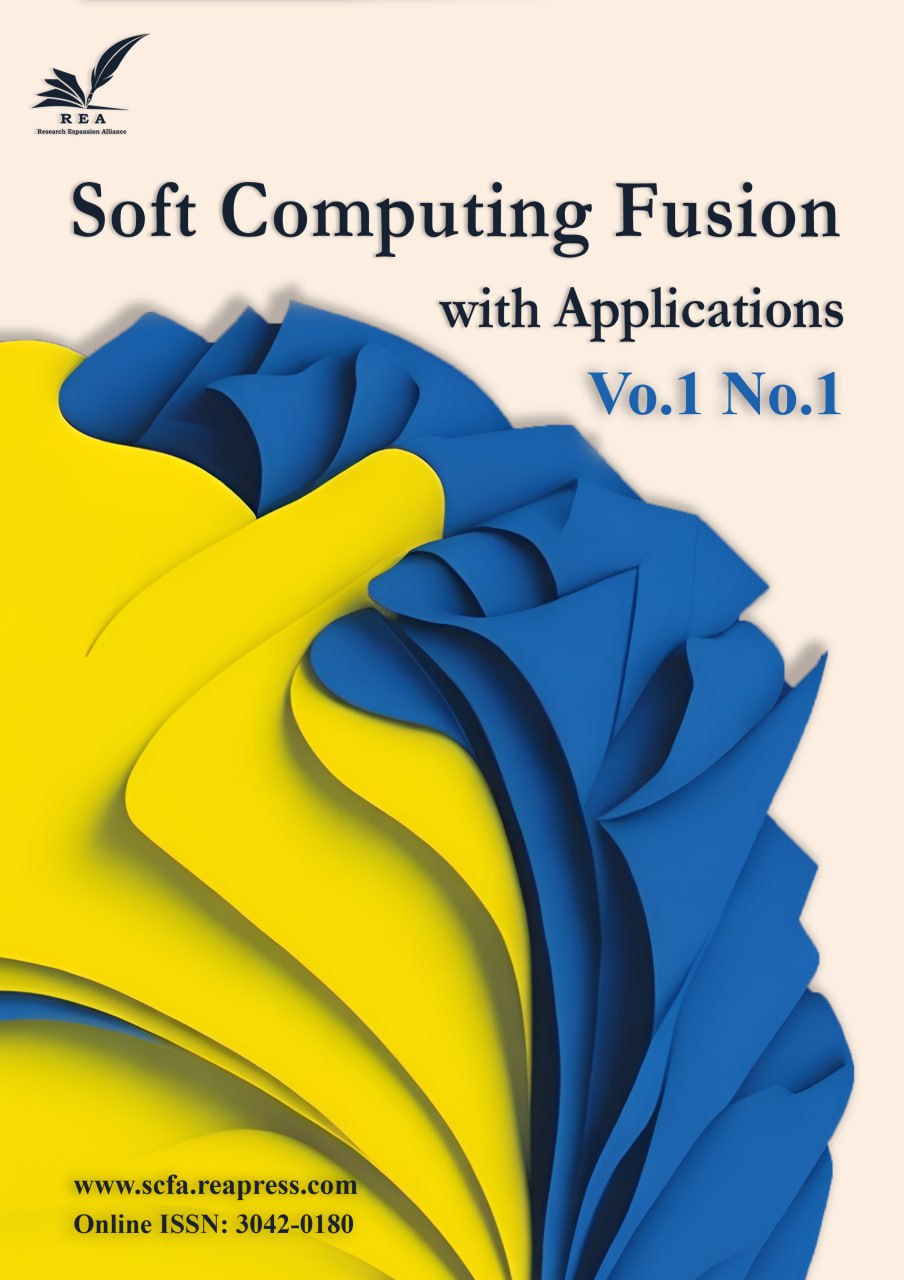Multi-Criteria Decision-Making Model for Rank Strategy to Overcome Barriers to Integrating the AI and Cloud Systems in the IT Industry
Abstract
This study proposed a decision-making framework for identifying key barriers when implementing Artificial Intelligence (AI) and cloud systems in the Information Technology (IT) industry. Then, it proposed a set of strategies to overcome these barriers. We proposed a Multi-Criteria Decision-Making (MCDM) methodology for various criteria. Multiple barriers, such as cost, technology, environment, and digitization, should be analyzed. The Evaluation-based on Distance from Average Solution (EDAS) method is an MCDM method logy used to rank the alternatives. The criteria weights are computed by the average method. This study used ten barriers and ten strategies. The results show that technological barriers have the highest importance in this study. The sensitivity analysis is conducted to show the stability rank of alternatives. There are eleven cases in which criteria weights are proposed. Then, the EDAS method is used to rank the other options. The results show the stability of the rank under different cases.
Keywords:
Artificial intelligence, Cloud systems, Information technology industry, Barriers, Multi-criteria decision making, StrategyReferences
- [1] Alshahrani, R., Yenugula, M., Algethami, H., Alharbi, F., Goswami, S. S., Naveed, Q. N., ... & Zahmatkesh, S. (2024). Establishing the fuzzy integrated hybrid MCDM framework to identify the key barriers to implementing artificial intelligence-enabled sustainable cloud system in an IT industry. Expert systems with applications, 238, 121732. https://doi.org/10.1016/j.eswa.2023.121732
- [2] Sasikumar, A., Ravi, L., Kotecha, K., Saini, J. R., Varadarajan, V., & Subramaniyaswamy, V. (2022). Sustainable smart industry: A secure and energy efficient consensus mechanism for artificial intelligence enabled industrial internet of things. Computational intelligence and neuroscience, 2022. https://doi.org/10.1155/2022/1419360
- [3] Bag, S. (2020). Big data analytics powered artificial intelligence to enhance sustainable manufacturing and circular economic capabilities. [Thesis]. https://www.proquest.com/openview/0cd9cba13c8a0339a408af68e95182c5/1?pq-origsite=gscholar&cbl=2026366&diss=y
- [4] Kamoonpuri, S. Z., & Sengar, A. (2023). Hi, may AI help you? An analysis of the barriers impeding the implementation and use of artificial intelligence-enabled virtual assistants in retail. Journal of retailing and consumer services, 72, 103258. https://doi.org/10.1016/j.jretconser.2023.103258
- [5] Al-Besher, A., & Kumar, K. (2022). Use of artificial intelligence to enhance e-government services. Measurement: Sensors, 24, 100484. https://doi.org/10.1016/j.measen.2022.100484
- [6] Alahi, M. E. E., Sukkuea, A., Tina, F. W., Nag, A., Kurdthongmee, W., Suwannarat, K., & Mukhopadhyay, S. C. (2023). Integration of IoT-enabled technologies and artificial intelligence (AI) for smart city scenario: Recent advancements and future trends. Sensors, 23(11), 5206. https://doi.org/10.3390/s23115206
- [7] Więckowski, J., Kizielewicz, B., Shekhovtsov, A., & Sałabun, W. (2023). How do the criteria affect sustainable supplier evaluation? - A case study using multi-criteria decision analysis methods in a fuzzy environment. Journal of engineering management and systems engineering, 2(1), 37–52. https://doi.org/10.56578/jemse020102
- [8] Özaşkın, A., & Görener, A. (2023). An integrated multi-criteria decision-making approach for overcoming barriers to green supply chain management and prioritizing alternative solutions. Supply chain analytics, 3, 100027. https://doi.org/10.1016/j.sca.2023.100027
- [9] Güneri, B., & Deveci, M. (2023). Evaluation of supplier selection in the defense industry using q-rung orthopair fuzzy set based EDAS approach. Expert systems with applications, 222, 119846. https://doi.org/10.1016/j.eswa.2023.119846
- [10] Chen, X. (2023). An integrated fuzzy group decision-making model for construction enterprise contractor selection based on EDAS method and information entropy. Journal of intelligent & fuzzy systems, 45(2), 3233–3245. https://doi.org/10.3233/JIFS-231063
- [11] Li, Q., Rong, Y., Pei, Z., & Ren, F. (2023). A novel linguistic decision making approach based on attribute correlation and EDAS method. Soft computing, 27(12), 7751–7771. https://doi.org/10.1007/s00500-023-08079-y
- [12] Liao, N., Gao, H., Lin, R., Wei, G., & Chen, X. (2023). An extended EDAS approach based on cumulative prospect theory for multiple attributes group decision making with probabilistic hesitant fuzzy information. Artificial intelligence review, 56(4), 2971–3003. https://doi.org/10.1007/s10462-022-10244-y
- [13] Akram, M., Ramzan, N., & Deveci, M. (2023). Linguistic Pythagorean fuzzy CRITIC-EDAS method for multiple-attribute group decision analysis. Engineering applications of artificial intelligence, 119, 105777. https://doi.org/10.1016/j.engappai.2022.105777
- [14] Mallick, R., Pramanik, S., & Giri, B. C. (2023). Neutrosophic magdm based on critic-edas strategy using geometric aggregation operator. Yugoslav journal of operations research, 33(4), 683–698. https://doi.org/10.2298/YJOR221017016M
- [15] Hosseini Dehshiri, S. S., & Firoozabadi, B. (2023). A new multi-criteria decision making approach based on wins in league to avoid rank reversal: A case study on prioritizing environmental deterioration strategies in arid urban areas. Journal of cleaner production, 383, 135438. https://doi.org/10.1016/j.jclepro.2022.135438
- [16] Zeng, S., Chen, W., Gu, J., & Zhang, E. (2023). An integrated EDAS model for fermatean fuzzy multi-attribute group decision making and its application in green-supplier selection. Systems, 11(3), 162. https://doi.org/10.3390/systems11030162
- [17] Torkayesh, A. E., Deveci, M., Karagoz, S., & Antucheviciene, J. (2023). A state-of-the-art survey of evaluation based on distance from average solution (EDAS): Developments and applications. Expert systems with applications, 221, 119724. https://doi.org/10.1016/j.eswa.2023.119724
- [18] Paul, T. K., Jana, C., & Pal, M. (2023). Multi-criteria group decision-making method in disposal of municipal solid waste based on cubic Pythagorean fuzzy EDAS approach with incomplete weight information. Applied soft computing, 144, 110515. https://doi.org/10.1016/j.asoc.2023.110515


